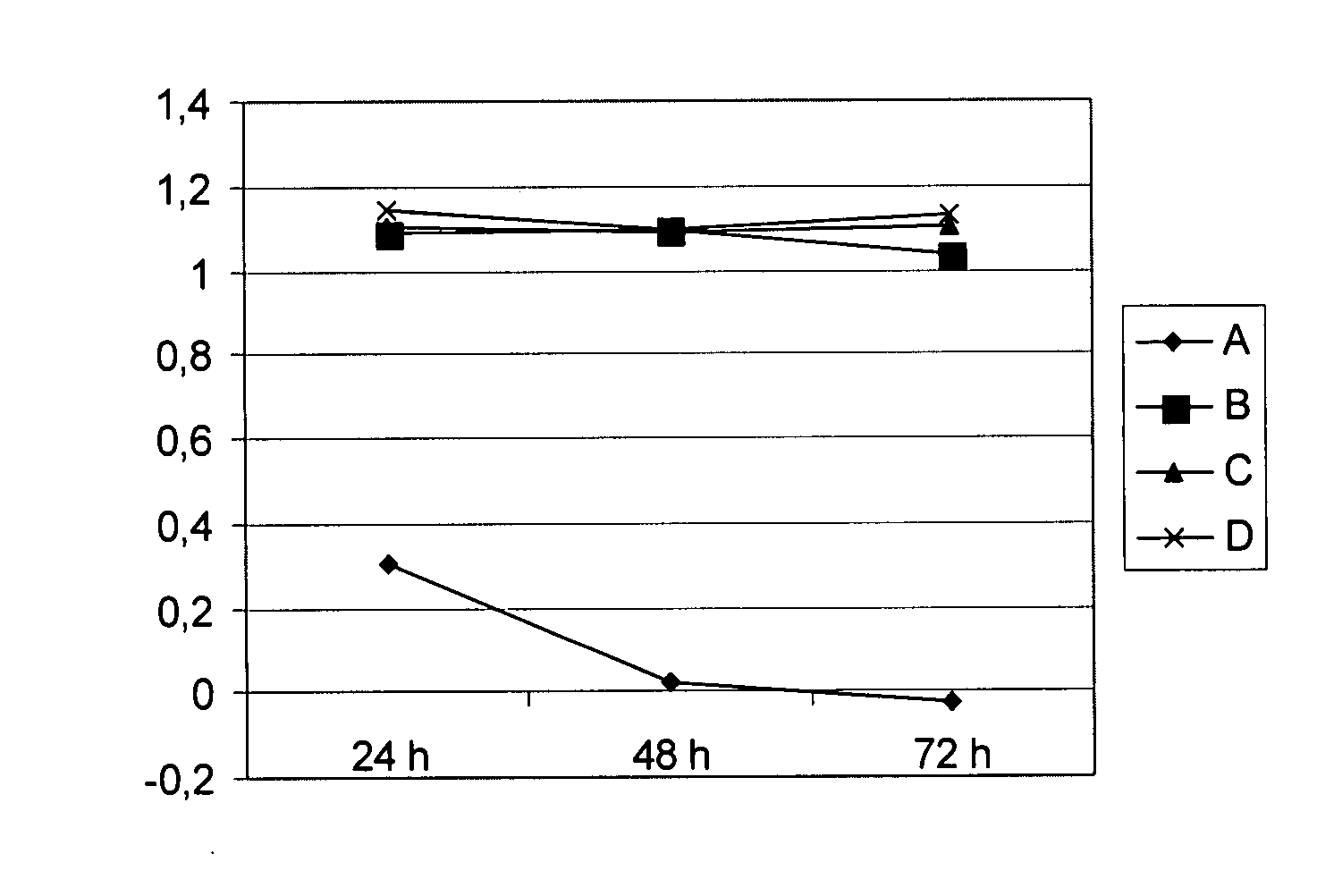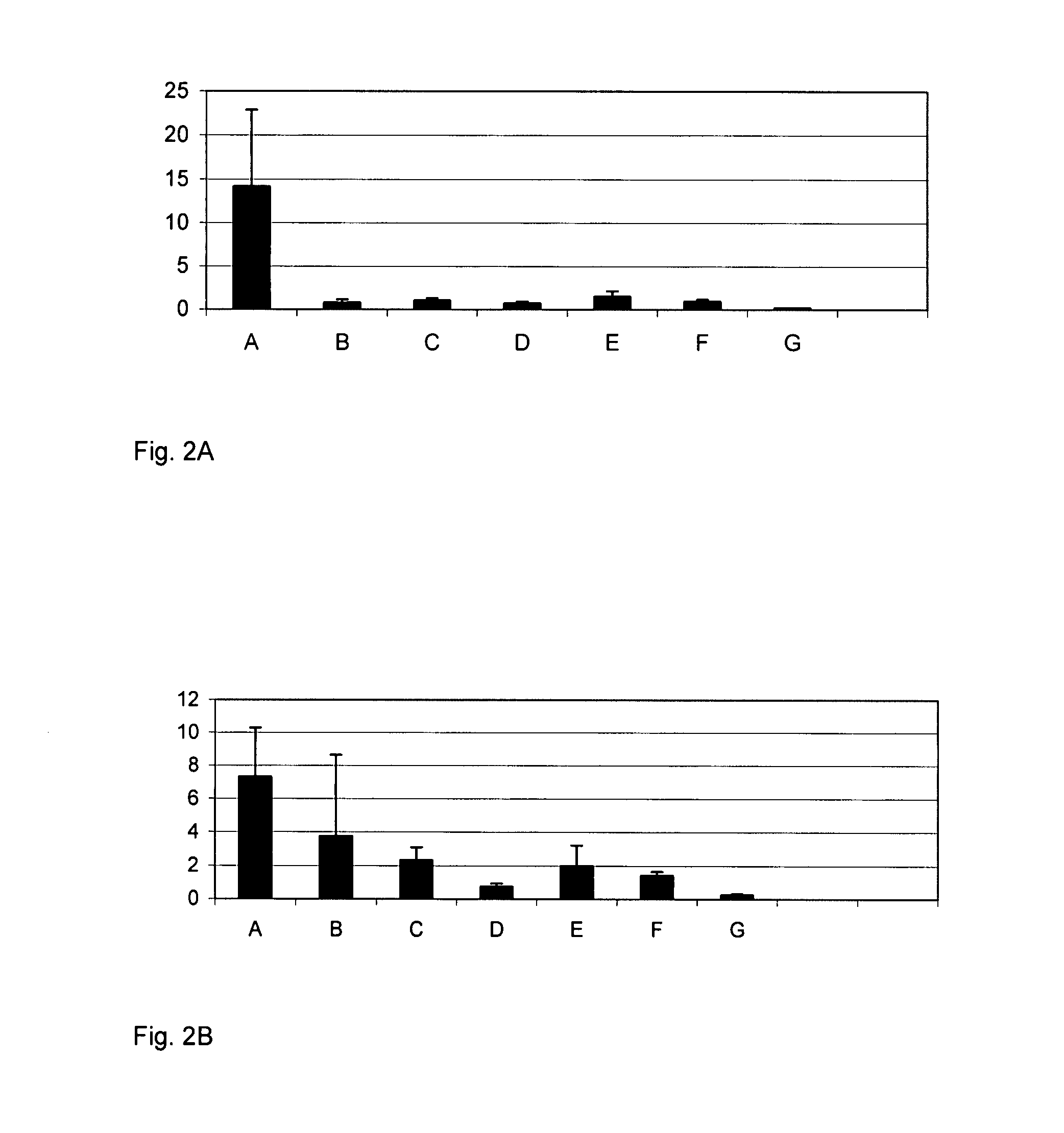Diagnostic and therapeutic agents
a technology of diagnostic and therapeutic agents, applied in the field of targeting agents, can solve the problems of limited treatment methods of cancer, malignant tumors still require a huge number of lives every year, and rarely achieve curative treatmen
- Summary
- Abstract
- Description
- Claims
- Application Information
AI Technical Summary
Benefits of technology
Problems solved by technology
Method used
Image
Examples
example 1
General screening method for bio-panning of patient samples
[0261] Phage display library. Standard procedures according to Smith and Scott (ibid.) were used. Phage display library used for screening of clinical samples was cloned in fUSE5 vector and was of the cyclic structure CX7C. The E. coli strain K91kan was used as host for phage amplification.
[0262] Phage display on clinical tumor samples. Tissue samples were surgically removed from lung metastases of colorectal cancer patients. Part of the sample was taken for pathological examination, rest was placed in ice cold DMEM-PI (Dulbecco's medium containing protease inhibitors PI; 10 mM PMSF (Phenyl-methyl-sulphonyl-fluoride), Aprotinin (10 mg / ml) Leupeptin (10 mg / ml)). Tissue samples were minced with a razor blade in a small cell culture plate in 1 ml of DMEM containing protease inhibitors. The samples were transferred to an eppendorf tube and washed with 1 ml DMEM-PI.
[0263] Samples were centrifuged at 5000 rpm for 4 min and wer...
example 2
Preparation of Synthetic Peptides
[0274] All peptide syntheses were carried out manually or by using an automated synthesis instrument (either Applied Biosystems 433A or Advanced Chem Tech 396DC). The method was solid phase peptide synthesis based on N-FMOC protection and HBTU / HOBt / DIPEA activation. The synthesis resins employed were Rink amide MBHA resin, cysteamine-2-chlorotrityl resin, 1,2-diaminoethane trityl resin or preloaded FMOC-amino acid Wang resin. In automated syntheses the standard operating procedures and reagents recommended by the manufacturers were employed.
[0275] The major reagents in these syntheses were from Applied Biosystems or from Novabiochem: Fmoc-Cys(Trt)-OH (for ‘C’), Fmoc-Tyr(tBu)-OH (for ‘Y’), Fmoc-Gly-OH (for ‘G’), Fmoc-Phe-OH (for ‘F’), Fmoc-Val-OH (for ‘V’), Fmoc-Trp(tBoc)-OH (for ‘W’), Fmoc-Glu(OtBu)-OH (for ‘E’), Fmoc-D-Ala-OH (for ‘a’) and Fmoc-Glu(O-2-Ph-i-Pr)-OH (for lactam-bridged ‘E’, i.e. for ‘E*’; the use of the asterisks herein is for indi...
example 3
Selective Binding of Colorectal Cancer Cells to Immobilized Targeting Agents
[0392] In these examples the following cell lines and culture conditions were used, where not otherwise indicated:
[0393] The human colorectal cancer HCT-15 cell line (ATCC: CCL-225), called herein also “HCT-15”, was cultured in RPMI 1640 medium with 2 mM L-glutamine adjusted to contain 1.5 g / L sodium bicarbonate, 4.5 g / L glucose, 10 mM HEPES, and 1.0 mM sodium pyruvate, 1% penicillin / streptomycin, 10% fetal bovine serum.
[0394] The human colon adenocarcinoma cell line LoVo (ATCC:CCL-229), called herein “LoVo”, was cultured in Ham's F-12 medium adjusted to contain 2 mM L-glutamine, 1% penicillin / streptomycin, 1.5 g / L sodium bicarbonate and 10% fetal bovine serum.
[0395] The colorectal cancer cell line HCT-15-LM1 was developed as follows. The cell culture was started with cancer cells from lung metastases which had developed after injection of human colorectal cancer HCT-15 cells into the bloodstream of a m...
PUM
| Property | Measurement | Unit |
|---|---|---|
| concentration | aaaaa | aaaaa |
| concentration | aaaaa | aaaaa |
| concentration | aaaaa | aaaaa |
Abstract
Description
Claims
Application Information
 Login to View More
Login to View More - R&D
- Intellectual Property
- Life Sciences
- Materials
- Tech Scout
- Unparalleled Data Quality
- Higher Quality Content
- 60% Fewer Hallucinations
Browse by: Latest US Patents, China's latest patents, Technical Efficacy Thesaurus, Application Domain, Technology Topic, Popular Technical Reports.
© 2025 PatSnap. All rights reserved.Legal|Privacy policy|Modern Slavery Act Transparency Statement|Sitemap|About US| Contact US: help@patsnap.com



